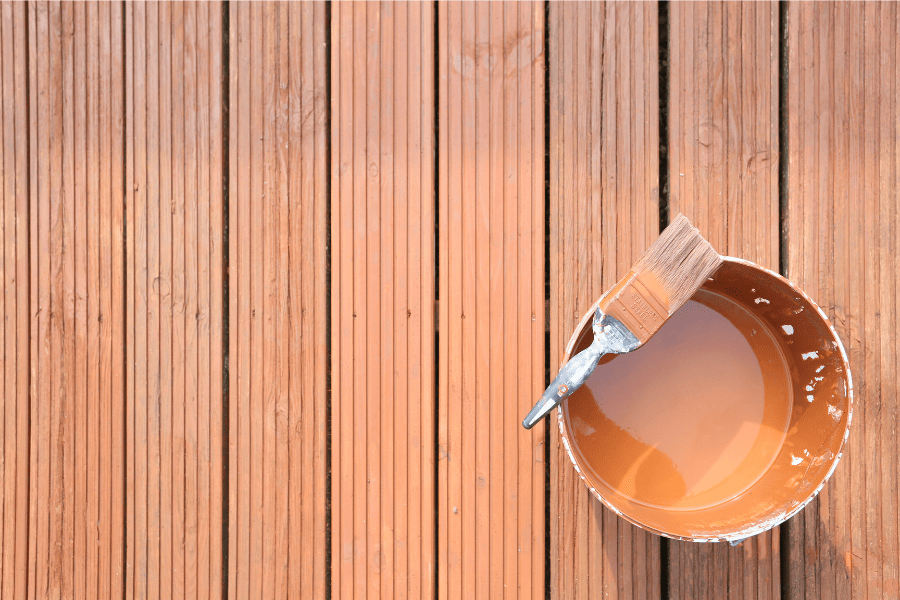Can You Paint Pressure Treated Wood? Nashville Expert Guide
Ready to give that pressure treated lumber a fresh look? Here's what Nashville homeowners need to know before grabbing that paintbrush.
Understanding Pressure Treated Wood
Pressure treated lumber offers excellent durability for outdoor projects. Since it's saturated with chemicals to prevent rot and decay, it's perfect for deck boards, fences, and exterior trim that face Nashville's varying weather conditions.
The downside? That distinctive greenish tinge that screams "brand new lumber" and stands out against your home's exterior.
The good news is that yes, you can absolutely paint pressure treated lumber. In fact, applying paint or stain is recommended to increase its longevity and beauty. While pressure treated wood has a strong start against the elements, it won't last forever without proper protection.
When Can You Paint Pressure Treated Wood?
The most critical factor is ensuring the lumber is fully dry. This drying process typically takes 4-6 months. Painting too soon can cause warping and paint adhesion issues as the chemicals in the wood prevent proper bonding.
Testing Wood Moisture Content
After several months, perform this simple test: Sprinkle a few drops of water on the wood surface. If the water soaks right in, the moisture level is low enough for painting. If it beads up, the wood needs more drying time.
Environmental factors affect this timeline. Wood in direct sunlight dries faster than in shady areas. For unused lumber, elevate it off the ground and arrange pieces in a criss-cross pattern for better airflow.
Step-by-Step Painting Guide

1. Clean the Wood Thoroughly
Before applying any type of paint, ensure you're working with a clean surface. Either gently power wash or scrub with sudsy water and a stiff brush. Afterward, allow 1-2 weeks for the surface to dry completely.
2. Apply the Right Primer
For staining, you can skip this step. At Nash Painting, we use Sherwin-Williams' Deckscapes with a built-in sealer, typically requiring just one coat.
For painting, use a high-quality exterior primer designed for pressure treated wood. Having your primer tinted to match your topcoat color improves coverage efficiency.
3. Apply Your Paint
After the primer dries thoroughly, apply your topcoat. Resist rushing—allow each coat of paint to dry completely before applying additional coats.
We recommend high-quality exterior latex paint (water-based). While premium paint costs more initially, the superior coverage and performance make it more economical long-term. Avoid oil-based paints on pressure treated wood, as they don't bond as well with the chemical treatments.
Paint vs. Stain: Making the Right Choice
Both approaches have their merits:
Paint creates a solid protective barrier, offers more color options, and typically lasts 3-7 years. However, it sits on top of the wood, hiding natural grain and requiring more intensive maintenance.
Stain penetrates deeper into the wood fibers, preserves natural character, and won't peel like paint. It needs refreshing every 2-3 years but is generally easier to maintain.
The verdict? Choose paint if your deck has blemishes or you want dramatic transformation. Select stain if you appreciate natural wood grain and prefer simpler maintenance.
Frequently Asked Questions
How long should you wait before painting pressure treated wood?
Wait 4-6 months for the wood to fully dry. Always perform the water drop test to verify readiness—if water beads up instead of absorbing, continue waiting.
What happens if you paint pressure treated wood too soon?
The paint won't adhere properly, boards may warp as trapped moisture escapes, and you'll face premature peeling and blistering. This means wasted time and money when you need to strip and restart.
What type of paint works best on pressure treated wood?
High-quality exterior latex paint (water-based) is ideal as it adheres better to the chemical treatments and allows remaining moisture to escape. Avoid oil-based paints which can trap moisture and cause issues despite the pressure treatment.
How do I ensure the paint sticks to pressure treated wood?
Ensure complete drying (4-6 months minimum), clean thoroughly, apply quality exterior primer specifically for pressure treated wood, use premium latex paint in thin, even coats, and allow proper drying time between applications.
Get Professional Results with Nashville's Exterior Wood Painting Experts
Need professional help with your pressure treated wood project? Contact Nash Painting for a free consultation. Our Nashville team specializes in long-lasting exterior finishes with our industry-leading 10-year warranty.


